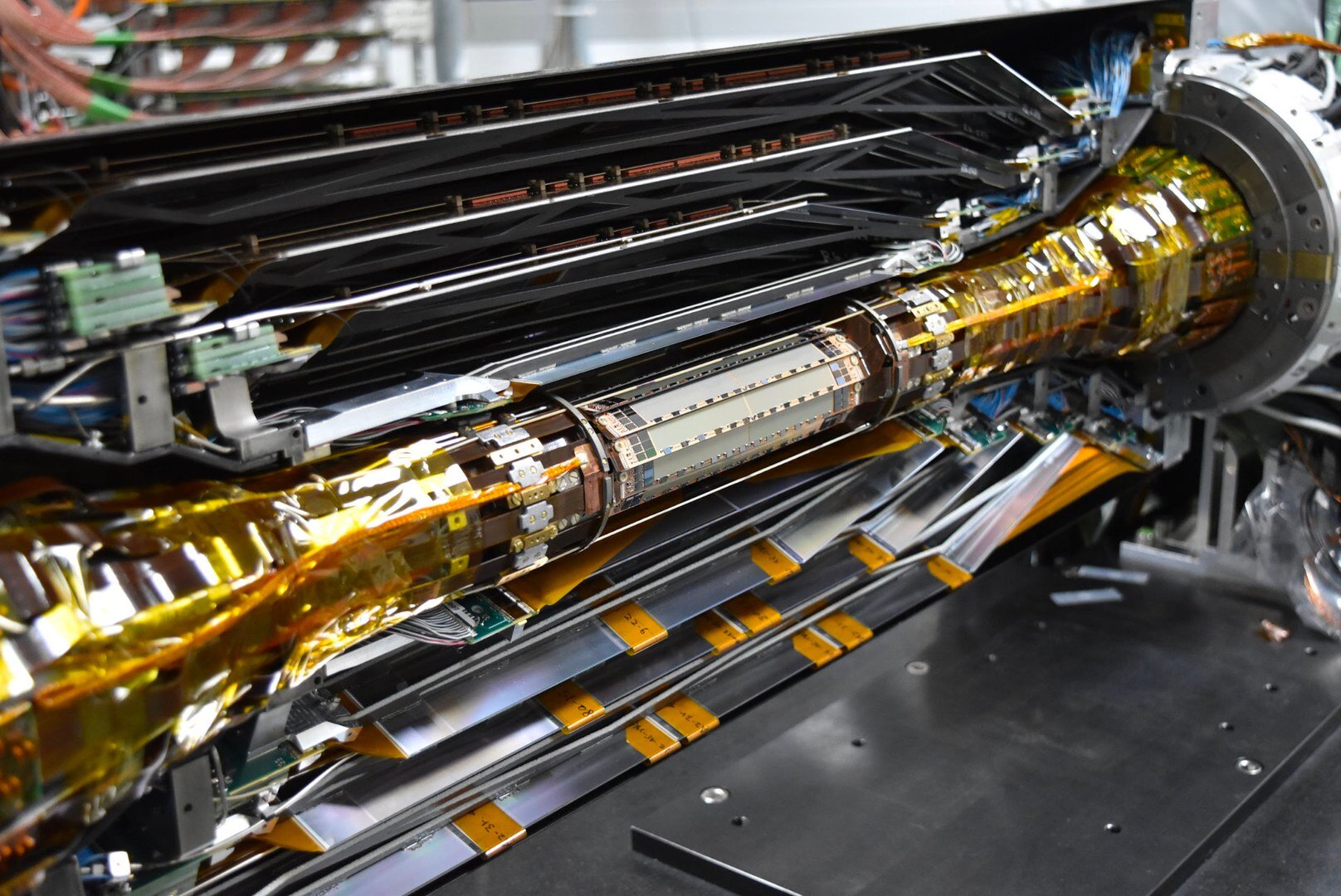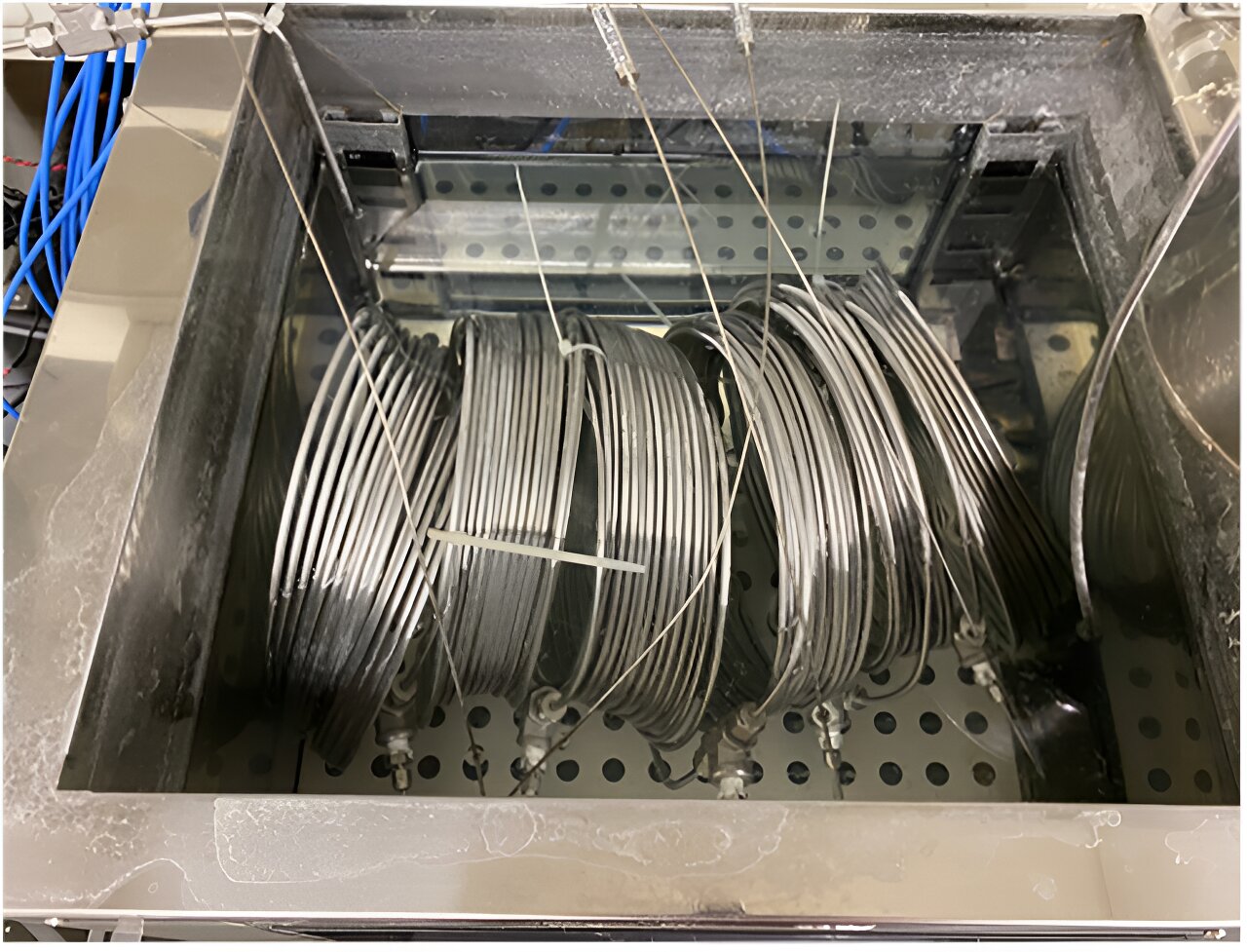The Belle II cooperation project at the Japanese research center KEK is revolutionizing the search for new phenomena in particle physics. A major milestone has been reached as the team successfully installed a new pixel detector in its final location in Japan.
The size of a soda can, this detector was developed to decipher signals from particle decays, shedding light on the origin of matter-antimatter asymmetry in the universe. The installation went smoothly, marking a significant milestone in the experiment and the German-Japanese research collaboration.
Belle II, based at the SuperKEKB accelerator in Japan’s KEK research center, is an international project involving researchers from around the world. With over 1,200 members, the collaboration aims to uncover answers to the universe’s unresolved questions. They are searching for new phenomena and unknown particles beyond the established Standard Model of particle physics.
The installation also signifies the end of a long journey for the detector. Starting in Munich, its components traveled across Germany, passing through several institutes before reaching Hamburg’s Deutsches Elektronen-Synchrotron (DESY) for assembly. Finally, it made a several thousand-kilometer trip to Japan, reaching its ultimate destination at the SuperKEKB electron-positron collider.
The air journey presented its own challenges, as any turbulence or mishandling could damage the highly sensitive sensors. To ensure its safety, a specially built case protected the detector, which even had its own seat in business class.
The University of Bonn played a major role in the detector’s installation. Botho Paschen, Technical Coordinator of the pixel detector project and a researcher at the University of Bonn, expressed satisfaction with the installation process, attributing its success to the hard work and dedication of the exceptional team involved.
Despite the challenges posed by the tight space, the next crucial step is to put the detector into operation and start recording new collision data in early 2024, according to Paschen. Prof. Dr. Florian Bernlochner, Belle II Group Leader at the University of Bonn, emphasized the importance of the new detector for the experiment’s physics objectives. It will enable accurate measurements of heavy quark lifetimes, allowing for a deeper investigation into the violation of charge-parity symmetry.
The violation of this symmetry is one of the preconditions to explain the dominance of matter in the universe. Belle II will provide a more precise understanding of matter-antimatter asymmetry and the potential role of undiscovered particles or forces in heavy quark decay.
The pixel detector, with its ultra-thin DEPFET sensor technology, is designed to capture up to 50,000 high-resolution images per second of decaying heavy quarks. It is now the thinnest pixel detector in the world, following its successful installation at Belle II.
In addition to its role in particle physics, the pixel detector’s DEPFET sensor technology has applications in X-ray satellite missions, the search for sterile neutrinos or dark matter, and medical imaging.
The University of Bonn’s Research and Technology Center for Detector Physics (FTD) provides the perfect environment for developing powerful detectors. The university’s Silicon Lab (SILAB) extensively tested and studied the capabilities of the pixel detector over several years. Prof. Dr. Jochen Dingfelder, FTD Co-Speaker and SILAB Director, expressed delight in the groundbreaking achievement resulting from fruitful collaboration between institutions and research centers.
The team from the University of Bonn extends their gratitude to everyone involved in Japan, Europe, and Germany for their hard work and commitment.








